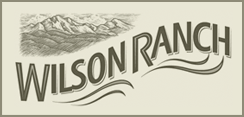Spring is here, and that means we have something to talk about. Weeds. At times they might be pretty to look at (like the image below of Oxeye daisies–another weed on the wanted list), or maybe they are something you spend very little time thinking about. But we hope to change your mind with this newsletter (and others to follow) with the goal of educating folks on why weed control is important in our community. The Lake Committee (which has absorbed the duties of the Weed Committee) would like to engage our residents and property owners and encourage more participation. Weeds spread easily, so if one neighbor does not keep their weeds under control, they can quickly spread to other areas. Please take a moment to read this special edition newsletter, dedicated to a weed that is an ongoing problem at Wilson Ranch. This month’s special guest is Diffuse Knapweed (aka Barnaby). This information is taken directly from the Methow Conservancy website, which is such a useful tool to reference: Weed guide
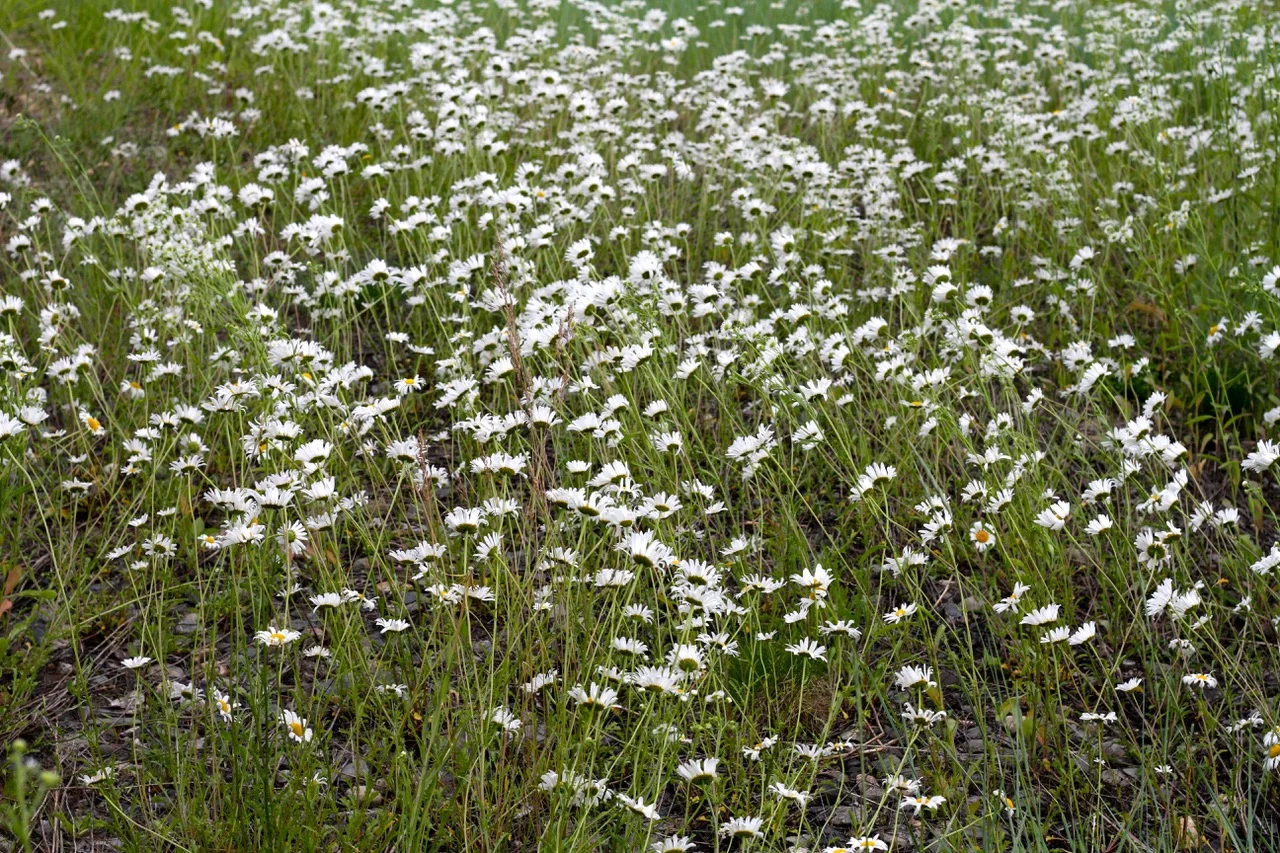
IN THIS ISSUE:
- Weed of the month: Diffuse Knapweed
- Lake Health
- The Lake Committee needs YOU!
- Lake Plan
- New webpages
Weed of the month: Diffuse Knapweed
Scientific Name: Centaurea diffusa
Family: Asteraceae (Aster or Sunflower Family)
Other common names: barnaby (many folks in the Methow call it this), white knapweed, tumble knapweed
Life Cycle: Biennial; spreads only from seed
Toxicity: Not known to be toxic to animals or human, but all knapweeds contain carcinogens, so it is best to wear gloves when pulling more than one plant.
| Description | Bloom (varies by elevation) | What to Do | When? | Invades Undisturbed Land | State Class |
|---|---|---|---|---|---|
| Takes 2 years to grow; starts with a “rosette” then grows 2-3′ tall; tiny flowers on branching stalks; gets prickly as it dries up. | Little white, pink or light purple thistle-like flowers bloom July-Sept. | Hand pull second-year plants; get the whole root. Biocontrol is effective on large populations. | June – Aug. best when ground is wet, before it goes to seed; bag and throw away seed-heads anytime. | Yes! Your pristine land is not safe; be on the lookout. | B |
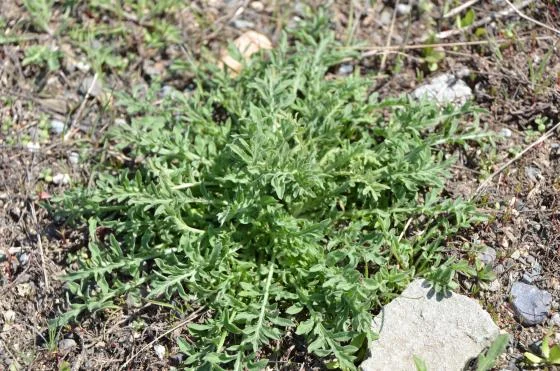
General Description
- Diffuse knapweed is a biennial thistle that can mature and flower at a wide variety of heights – anywhere from a few inches to a few feet tall.
- First-year plants stay low to the ground with a “rosette” of deeply divided fern-like leaves.
- Second-year plants have one stiff and upright stalk/stem with numerous spreading branches giving it a rounded top.
- Flowers are white or pink to light purple, with small, sharp spines that are soft early in the season then get prickly.
- Stems, leaves and flower heads are covered in tiny hairs, giving the plant a grayish appearance.
- Knapweed can flower continuously from early summer into the fall.
Life-Cycle
- Being a biennial, knapweed completes its life cycle in two years.
- The first year, it establishes a taproot – a single long root that goes straight down into the ground – and a basal rosette (a little ring of leaves).
- The second year, the plant grows upward with a stalk; it flowers, produces seeds and then dies.
- Diffuse knapweed reproduces only by seed (not roots).
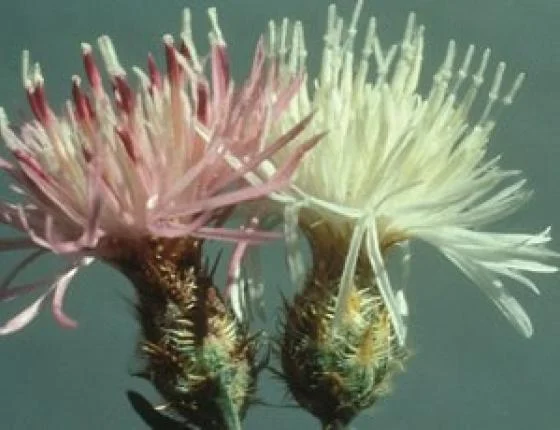
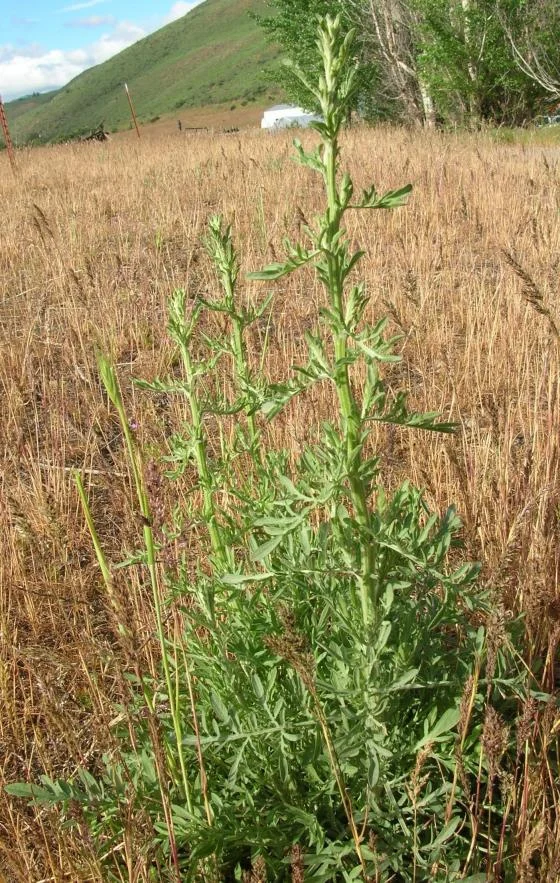
Prevention & Control
Prevent
- When driving or walking or moving with animals through infested areas, inspect and clean clothing and shoes, vehicles, and animals to remove any seeds before going into uninfested areas.
- Saturated or well irrigated soils typically kill knapweed.
Hand-Pull
- The best control for any biennial, including diffuse knapweed, is hand pulling the second year plant; the long stalk gives you leverage on the long tap root.
- It’s important to get the entire long taproot, so pull when the soil is moist.
- Pulling in May & June is ideal because plants are usually not prickly yet; can be left on the ground; and the plant has not produced seeds yet.
- It’s important to get the entire long taproot, so pull when the soil is moist.
- If there’s any chance flowers have “gone to seed,” put plants in a sealed bag and throw them away, or burn them in a hot and controlled fire.
- Wear gloves when pulling; knapweed contains carcinogen diffuse knapweed, is hand pulling the second year plant; the long stalk gives you leverage on the long tap root.
Mowing
- Mowing or weed-whacking, if done during budding or very early flowering, can impede growth by hindering seed production, but it does not eliminate them entirely. And if mowed at the wrong time, it can actually encourage low-to-the ground-blooming.
Biocontrols
- The knapweed seed head weevil (Larinus minutus) is a tiny beetle that is effective at reducing large knapweed infestations.
- The Regional Biocontrol Project run through the Ferry County Extension office for both Okanogan and Ferry Counties, is the source of several free biocontrols, including the knapweed seed head weevil. Follow the above link to the website for more information.
- Any method requires repeated sessions over several seasons because seeds stay viable in the soil for many years.
See the whole “Toolbox of Weed Control Methods” for more details.
Lake health and landscaping update
Our local biologist Bob Jateff just gave an update on the water quality and fish health of Freestone Lake. The dissolved oxygen, pH, and temperature were all within normal levels. He was able to catch 5 very healthy fish in less than an hour, and their length ranged from 15-17 inches. His plan is to stock the lake this summer with 100 more triploid rainbow trout. The Lake Committee is currently working with Bob to devise methods to safely control the pond weed and management is looking into ways to repair the broken third bubbler.
Wilson Ranch has enlisted the help of Kyle Northcott (the Yardener) to help maintain the beautiful landscape around Freestone Lake. He will be coming to work around the lake once a month during the spring and summer. If you see him out working on the trail, say hello!
The Lake Committee is looking for new members!
Do you want to have your voice heard in regards to Freestone lake and the common areas around it? The Lake Committee is looking for new members to join! Reach out to Paul Lambert (chairperson) if you are interested.
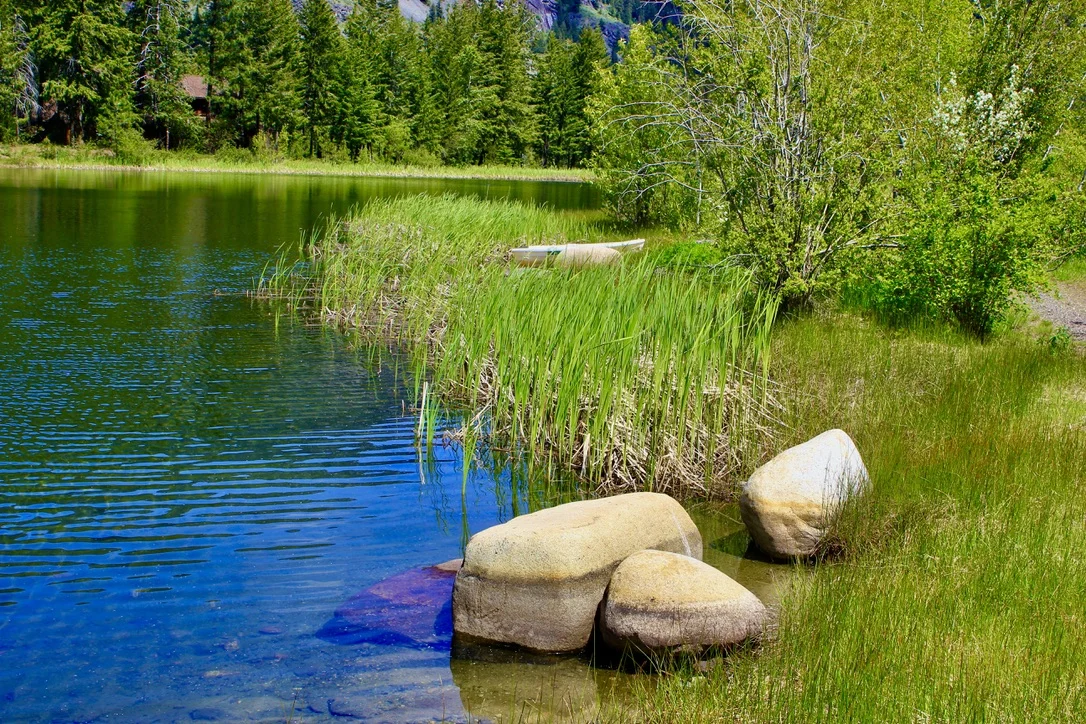
Check out the new Lake Plan document!
Last fall the Lake Committee tackled the task of updating the Lake Plan: Freestone Lake Plan 2023. Please take a moment to read it and tell us what you think! Click on the link to download a copy or it can also be found in the Documents section of the website under General Info.
Other new additions to the website:
Please also take a moment to check out some new pages that have recently been added to the website:
These pages have great tips on living safely with black bears and more weed information and links.
Another new addition to the website is a brand new Committee Meetings page. There you will find minutes and agendas from past committee meetings, and future meeting dates listed. If you want to see what our committees are up to, or are just looking for a particular piece of info, head on over and take a look!
Please contact Rachael Plemel or Marvin Sutton with any questions
methowvalleyps@gmail.com
msutton@freestoneinn.com
